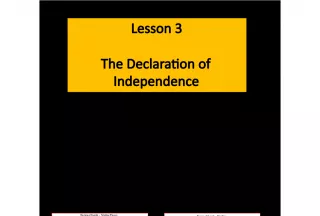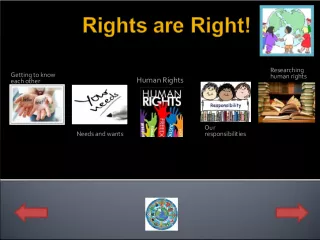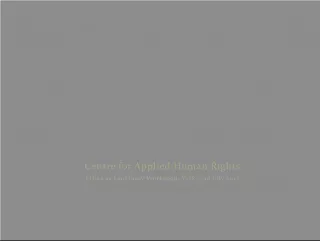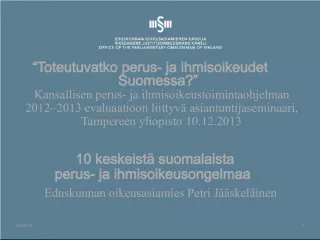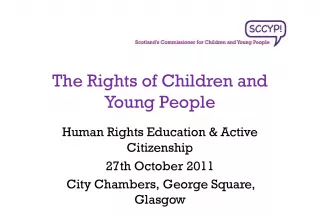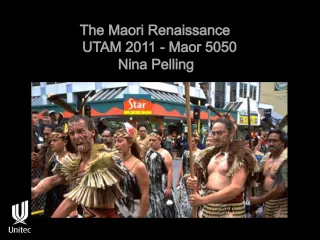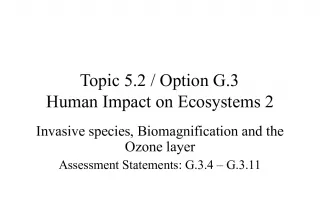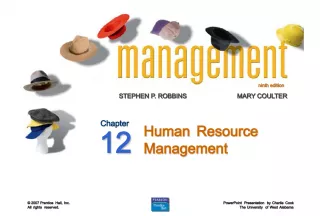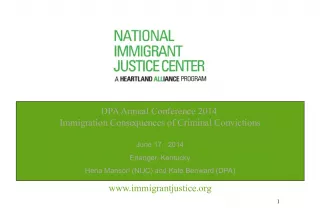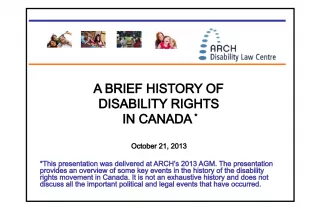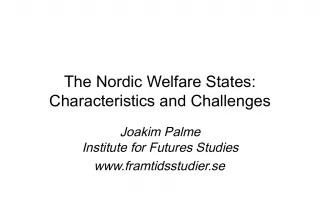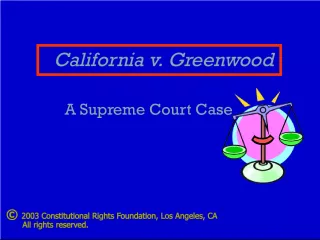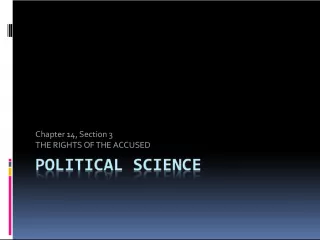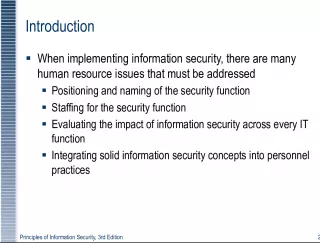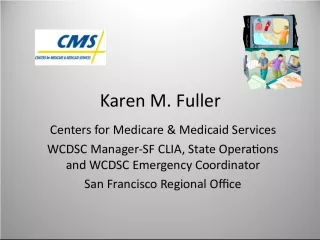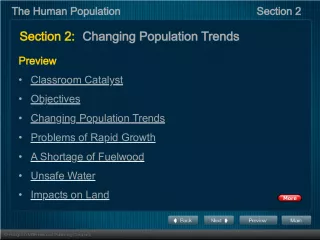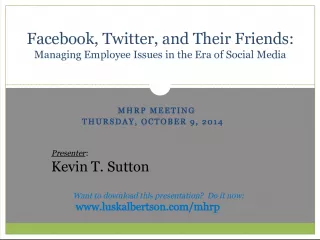The Universal Declaration of Human Rights and its Impact on Refugees
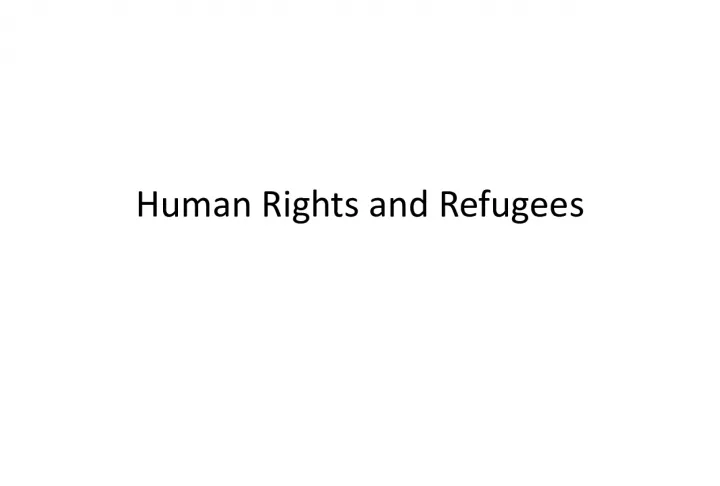

On December 10th, 1948, the United Nations General Assembly adopted and declared the Universal Declaration of Human Rights - a global expression of human rights to which
- Uploaded on | 0 Views
-
 abigail
abigail
About The Universal Declaration of Human Rights and its Impact on Refugees
PowerPoint presentation about 'The Universal Declaration of Human Rights and its Impact on Refugees'. This presentation describes the topic on On December 10th, 1948, the United Nations General Assembly adopted and declared the Universal Declaration of Human Rights - a global expression of human rights to which. The key topics included in this slideshow are . Download this presentation absolutely free.
Presentation Transcript
Slide1Human Rights and Refugees
Slide2Declaration of Human Rights• On the 10 th of December, 1948, the General Assembly of the UN adopted and proclaimed the Universal Declaration of Human Rights. • Arose directly from the experience of WWII. • First global expression of human rights to which all human beings are entitled. • There are 30 articles.
Slide3Eleanor Roosevelt with the Declaration(in Spanish)
Slide4Beginnings…• Some states (such as the US) have similar rights enshrined in their constitution. • In the 1941 State of the Union address, Franklin Roosevelt called for the protection of the ‘four freedoms’: – Freedom of Speech – Freedom of Conscience – Freedom from Fear – Freedom from Want
Slide5PreamblePREAMBLE Whereas recognition of the inherent dignity and of the equal and inalienable rights of all members of the human family is the foundation of freedom, justice and peace in the world, Whereas disregard and contempt for human rights have resulted in barbarous acts which have outraged the conscience of mankind, and the advent of a world in which human beings shall enjoy freedom of speech and belief and freedom from fear and want has been proclaimed as the highest aspiration of the common people, Whereas it is essential, if man is not to be compelled to have recourse, as a last resort, to rebellion against tyranny and oppression, that human rights should be protected by the rule of law, Whereas it is essential to promote the development of friendly relations between nations, Whereas the peoples of the United Nations have in the Charter reaffirmed their faith in fundamental human rights, in the dignity and worth of the human person and in the equal rights of men and women and have determined to promote social progress and better standards of life in larger freedom, Whereas Member States have pledged themselves to achieve, in co-operation with the United Nations, the promotion of universal respect for and observance of human rights and fundamental freedoms, Whereas a common understanding of these rights and freedoms is of the greatest importance for the full realization of this pledge, Now, Therefore THE GENERAL ASSEMBLY proclaims THIS UNIVERSAL DECLARATION OF HUMAN RIGHTS as a common standard of achievement for all peoples and all nations, to the end that every individual and every organ of society, keeping this Declaration constantly in mind, shall strive by teaching and education to promote respect for these rights and freedoms and by progressive measures, national and international, to secure their universal and effective recognition and observance, both among the peoples of Member States themselves and among the peoples of territories under their jurisdiction.
Slide6So?• What are the consequences for states who don’t abide by this declaration? • There have been many instances of rights not being granted, – i.e. Segregation in the United States (Civil Rights Act of 1964) – Guantanamo Bay • What are the consequences?
Slide7Refugees• A refugee is a person who "owing to a well- founded fear of being persecuted for reasons of race, religion, nationality, membership of a particular social group, or political opinion, is outside the country of his nationality, and is unable to or, owing to such fear, is unwilling to avail himself of the protection of that country…"
Slide8UNHCR• The following information is from the UNHCR website: http://www.unhcr.org.au/basicdef.shtml
Slide91951 Convention
Slide10Most Important• Refugees have to be outside their country of origin, • The reason for their flight has to be fear of persecution, • The fear of persecution has to be well-founded • The persecution has to result from one or more of the 5 grounds listed in the definition (race, religion, nationality, membership of a social group, or political opinion) • They have to be unwilling or unable to seek the protection of their own country.
Slide11Misused term• The term has slipped into common usage to cover a range of people, including those displaced by natural disaster or environmental change. Refugees are often confused with other migrants. • In international law, the term 'refugee' has a specific meaning and is NOT to be confused with 'economic refugee'.
Slide12Refugees• Economic Refugee This term is not correct. The accurate description of people who leave their country or place of residence because they want to seek a better life is ' economic migrant’. • Economic Migrant Migrants make a conscious choice to leave their country of origin and can return there without a problem. If things do not work out as they had hoped or if they get homesick, it is safe for them to return home.
Slide13Illegal Immigrants• Illegal immigrants are people who enter a country without meeting legal requirements for entry, or residence. On the other hand, refugees often arrive with ‘barest necessities’ and without personal documents. The Refugee Convention says that states should not impose penalties on individuals coming directly from a territory where their life or freedom is threatened on account of their illegal entry. (Article 31) Furthermore, under Article 14 of the Universal Declaration of Human Rights, everyone has the right to seek and enjoy asylum.
Slide14Asylum Seekers• Refugees should also not be confused with asylum seekers - the two terms have different legal definitions. • An asylum seeker is a person who has left their country of origin, has applied for recognition as a refugee in another country, and is awaiting a decision on their application.
Slide15IDPs• An Internally Displaced Person (IDP) may have been forced to flee their home for the same reasons as a refugee, but has not crossed an internationally recognised border. Many IDPs are in refugee-like situations and face the same problems as refugees. There are more IDPs in the world than refugees. Globally, there are an estimated 20-25 million so-called internally displaced persons (IDPs) and UNHCR helps 6.3 million of these.
Slide16Impact of Globalisation and Internationalismon Human Rights & Refugees BRAINSTORM
